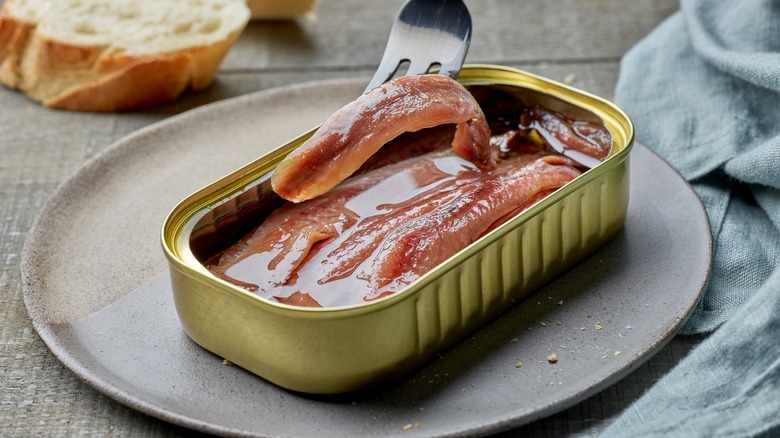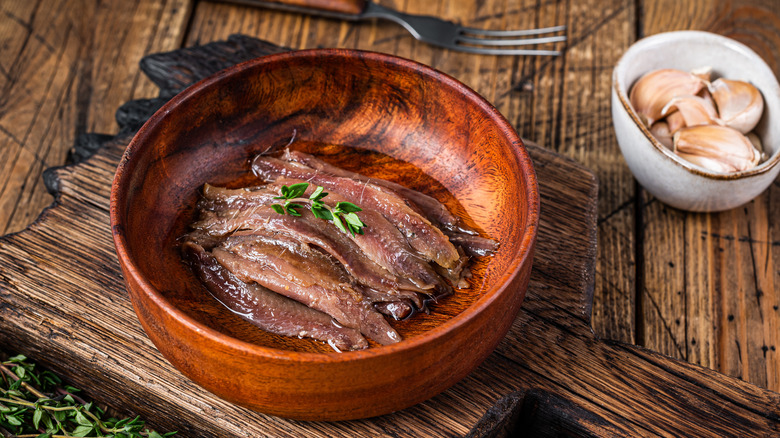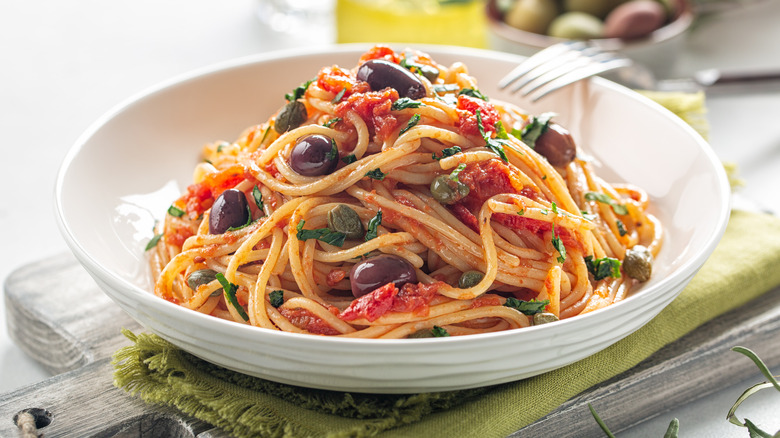Should You Throw Out Cloudy Anchovy Jars?
Humans have been conditioned to be really suspicious when our food shows signs of spoilage since it could be a matter of life or death. Sometimes the signs of rotting food are obvious, like when there is fuzzy mold on the food. Other times, the food is noticeably softer, smells "off," or changes color, but it is not always clear if we need to discard it. Cheese is a good example and as Healthline explains, you can just cut off the moldy portion of hard cheese and the rest becomes edible because mold does not easily penetrate hard cheese. Don't try this with soft cheese, though.
Anchovies fall in the category of food that seems to have changed color, but it is unclear if we need to chuck it out. On social media, there are threads where people ask why their newly opened jar of anchovies has a white or cloudy substance coating it. This extends to canned anchovies as well and is potentially a frequently asked question to seafood product manufacturers. That is likely why the canned seafood company, Crown Prince has an answer on their website. The short version? It's harmless.
That white coating is probably salt
Before we get into the long version of the answer, here's some background to anchovies. The fish is an important ingredient in Italian, Southern French, and Spanish kitchens that can be eaten fresh. In South East Asia and parts of North Africa, it is typically eaten as salted fish via preservation methods. The jarred or canned anchovies in our homes are the preserved versions. There is no cooking or pasteurization involved.
Both commercial or homemade methods to preserve anchovies start with salting the anchovies for a few months until they become soft and change color. The salt breaks down the anchovies and gives them that umami flavor we are accustomed to. The next few steps will vary depending on the organization or individual but it involves rinsing the salt from the fish until it has the desired taste profile, topping it with oil, and then storing it in an air-tight container.
If you open a can or jar of anchovies and see a white substance inside, it is most likely just residual salt that collects around the fish and is harmless. Similarly, if you keep the anchovies in the fridge, the oil coating the anchovies will coagulate. This happens when olive oil's natural waxes start to separate from the liquid in clumps as the oil is subject to cold temperatures. The bottom line? Do not be put off by the white blobs or cloudy substances, as they are likely harmless.
Still learn how to store anchovy jars properly
Anchovies are packed in flavor and this sometimes means it can be difficult to use an entire jar in one go. There are bound to be some leftovers so it's important to know how to extend the life of your anchovy jar. A 1993 study by the International Agency for Research on Cancer recommended for salted fish (or in this case, anchovies) be cured and stored under cool conditions, preferably in a refrigerator. This aligns with Crown Prince's suggestion as well. After opening a jar or can of anchovies, make sure that the anchovies are always submerged in oil. Top the container up with oil if there are bits that are sticking out, or else mold will start to grow. This is the point when you should throw out the jar.
There are many ways to use leftover anchovies to add flavors to food. Try a French sauce called anchoïade using whole anchovies, olive oil, minced garlic, and vinegar. Alternatively, tone down the taste of anchovies by using it in pasta puttanesca, where it will complement the tomatoes and olives.


